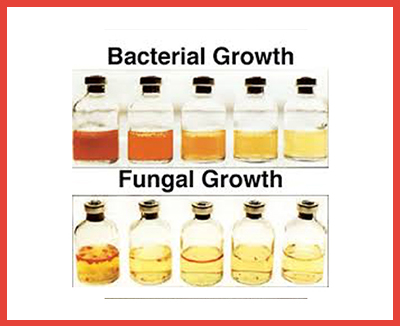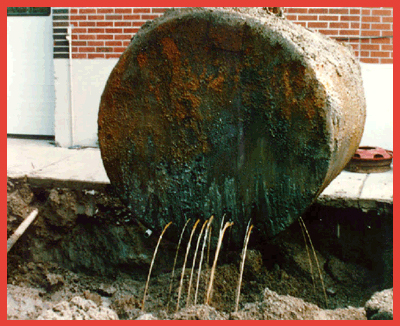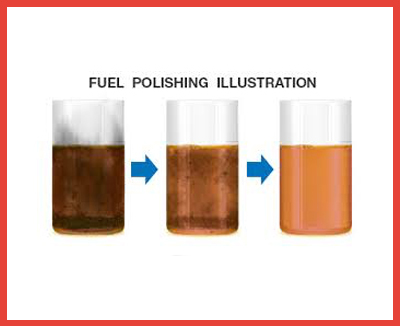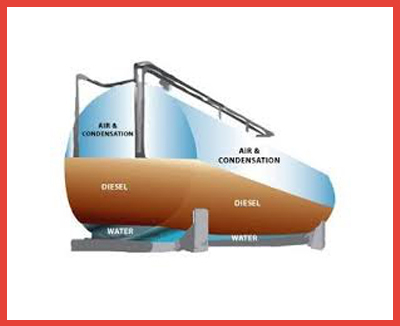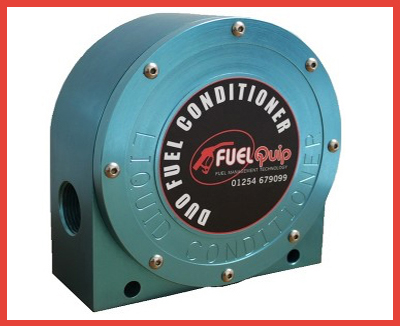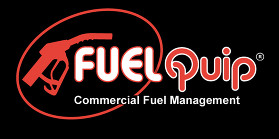Maintaining Fuel Quality in the Bio – Fuel Era
Preventing Diesel Bug – Over the last ten years the fuel we use to power our vehicles, plant and machinery has changed considerably due to requirements to increase efficiency, reduce carbon emissions and reduce combustion by-products such as SO2.
One significant change that has occurred is the obligatory blending of renewable fuels into existing fossil fuels currently set at 5%.
These renewable sources help preserve fossil fuel reserves but they also increase the vulnerability of the fuel to degradation through chemical and biological activity i.e. Diesel Bug.
While both the fuel makeup and quality requirements have changed operators and owners of fuel facilities have only maintained the same level of fuel maintenance as in the past.
Fuel begins its life pure from the refinery. It is practically dry of water, virtually sterile and produced to national standards. However the fuel we buy is not refinery fresh, the tankers and pipelines used to transport the fuel are not brand new, the tanks used to store the fuel in are not brand new, or air tight. So it is to be expected that there will be some slime, rust and water to contend with. As a consequence the time fuel can be stored in tank before natural fuel degradation occurs has shortened and there are now other issues that need to be considered.
In Bio Ethanol this is known as phase separation.
In Bio Diesel Microbial growth “Diesel Bug” can be evident given the right conditions.
What can be done about Diesel Bug?
So now we know that fuel is more vulnerable to degradation what should we be doing that we are not doing already. At the moment a lot of fuel facility operators and companies that store fuel onsite have a more reactive approach to fuel quality management. Often repeated pump and engine filter blockages or worse engine failures trigger an investigation. This usually results in a fuel quality check and tank maintenance. This system is less than ideal as an impact has to be felt before action is taken and the poor condition of the fuel and the tank often requires expensive and invasive maintenance.
1 – Monitoring fuel quality
Given the vulnerability of modern fuels to contamination and degradation switching to a regular monitoring system would make the most sense. Sampling from the bottom of the storage tank(s) can provide a wealth of information about the fuel stored inside and identify problems such as water ingress, physical contamination and microbial build up before they impact on the dispensers Monitoring water content in storage tanks and particulate build up, over time trends can be observed and intervention thresholds can be identified and used to schedule preventative maintenance.
Maintaining fuel quality and tank hygiene are key to maintaining equipment reliability for vehicle fleets, plant fleets and engine sets deployed for power generation. By having a healthy fuel storage tank the quality of the fuel stored inside can be kept as high as possible this can result in reductions in fuel costs along with increased engine output and a reduction in vehicle emissions.
2 – Annual tank testing
Tanks and lines can last a long time but periodic integrity checks are valuable to ensure they can keep fuel in to prevent environmental contamination and keep water out to prevent fuel contamination. FuelQuip recommend tank and line tests are carried out on an annual basis and that records of such tests are kept together with maintenance records.
Keeping these records also prove you have taken a responsible approach to fuel storage at your company’s facility. This can reduce your liability from claims if the storage tank or fuel line(s) do fail.
3 – Water removal and fuel cleansing and filtration
If a distinct water layer has formed in the fuel the water can be uplifted. If the water is suspended through the fuel and/or physical contamination has been identified through proactive sampling, cleansing the fuel through ultrafine water and particle filters will be required.
4 – Kill the Microbes
Removal of 100% of water from in-use storage tanks is not always achievable, as night follows day, the presence of water in fuel provides a breeding ground for the “Diesel Bug” which will lead to tank corrosion and blocked filters.
FuelQuip can supply a treatment to be added to the fuel tank before a fuel delivery is put into the tank. This treatment removes water contained within the tank and suspended within the fuel, thus eliminating the water/fuel level which the “Diesel Bug” breeds at.
5 – Install Fuel Conditioners into fill and suction lines
Fuel conditioners / pre filtration units combat rust and microbial growth; powerful magnets inside the devices arrest ferrous particles and the fuel passing through the conditioner breaks up, knock out the bio-film “Diesel Bug” so it can pass through pump and vehicle filters and be burnt in the vehicles engine.
FuelQuip can supply and install fuel conditioners for pipe sizes from ¼” to 3” enabling relief from microbial growth and corrosion at every stage of fuel storage and dispensing.


